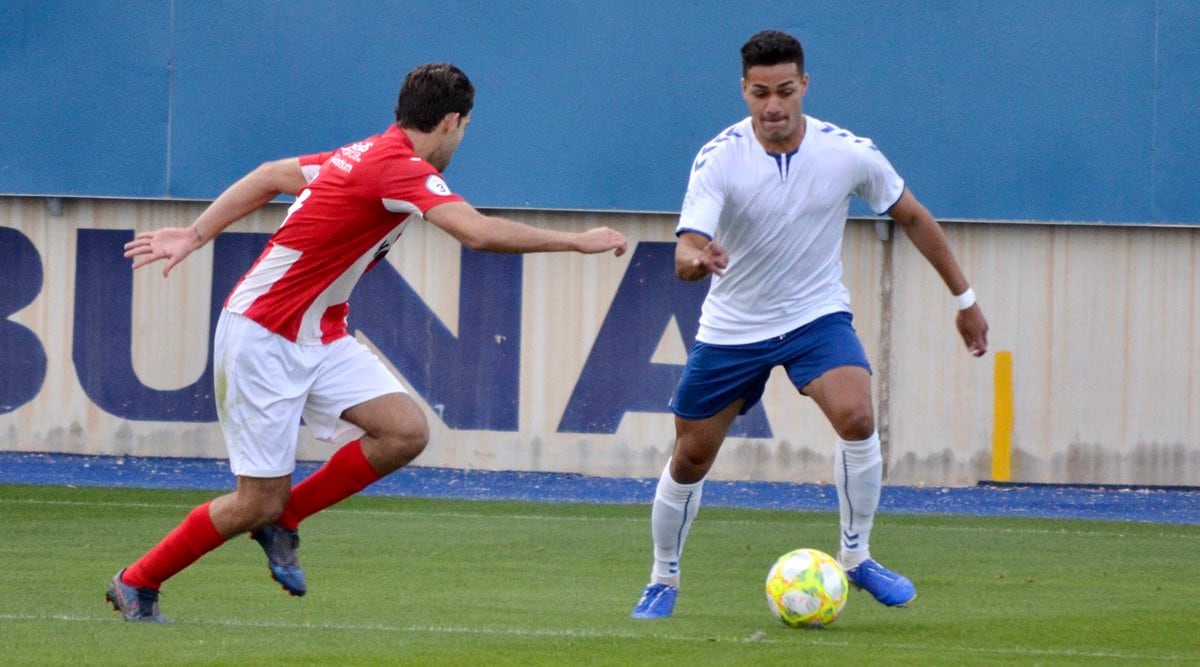Some even see Ishan Pandita as the successor to Sunil Chhetri and eventually lead India’s forward line.
A glowing reference by his former Espanyol teammate Walter Pandiani was enough for FC Goa manager Juan Ferrando to make, what is virtually, a blind signing. “Walter told me,” Ferrando says, “Ishan is the future of Indian football.” He quickly tempers down the expectations. “But it’s football, eh?”
This sums up the hype and caution surrounding Ishan Pandita. The forward, 22, is arguably one of the most exciting and talked-about young Indian players. Some even see him as the successor to Sunil Chhetri and eventually lead India’s forward line.
But here’s the catch: few in India have actually seen him play. The buzz around him, instead, is largely because of the route he chose to take to become a professional: grinding his way through the Spanish youth system, securing a spot for himself with Lorca in Spain’s third tier, before signing a deal with a top-division Indian club, FC Goa, which has a heavy Spanish influence.
It’s an impressive CV for an Indian youth player. And a handful of YouTube videos from Spain’s youth league and third-tier games attest to his potential. “Maybe he can be an example for many of the other young Indian players,” Ferrando says.
Pandita, who is calmly soaking in all the attention, must feel like a foreigner in his own land. The Delhi-born, Manila-bred player, who lived in Bengaluru for five years before spending the last six in Madrid has now made Goa his ‘home’. “Because of the Covid-19 pandemic, it was difficult to find a club in Spain,” Pandita says. “So I thought it was a good time to return to India.”
He had left the country for the first time when he was just three after his family moved to the Philippines’ capital. “I was enrolled into the British School of Manila and that’s where everything kicked off,” Pandita says.
“Football, athletics, swimming… In fact, swimming was number one for me and football was a close number two.” But after the family relocated to Bengaluru in 2009, the priorities were reversed. “I was living an hour-and-a-half away from the facility so the situation made it hard for me to pursue swimming,” he says. “I gradually went toward football.”
Even after relocating to Bengaluru, Pandita had continued his association with the age-group team of Manila-based Makati Football Club. In 2013, Makati represented the Philippines in the Gothia Cup – one of the biggest international tournaments for youth teams from across the world – and Pandita was a part of the squad.
The team did not do so well but Pandita got noticed. Swedish club IF Brommapojkarna (known for being one of the biggest clubs in Europe in terms of the number of teams across all age-groups) offered him a trial for their under-17 side. But the idea of sending their 15-year-old child to a ‘dark and cold’ Stockholm did not enthuse Pandita’s parents.
In 2014, however, they warmed up to the opportunity of sending their son to a bright and sunny Madrid, where he joined Alcobendas CF. The move set the ball rolling and the following year, he got scouted by the youth team of Almeria, who were in the Segunda Division at the time.
Pandita’s performances there caught the attention of Leganes, newly-promoted to La Liga, who offered him a deal. Pandita couldn’t refuse a La Liga side and became a part of Leganes’ squad for the youth league.
Ferrando, who signed Pandita at FC Goa claims to have seen him play at Lorca, says the level of competition in the youth league is intense. “Leganes were playing in a high category against (youth) teams like Real Madrid, Atletico Madrid… very, very hard category since a lot of good teams are from that region,” Ferrando says.
Explaining a normal youth set-up in Spain, Ferrando adds: “When you are playing in U-19 in Spain, you are thinking about football 24 hours. You are watching the games of the first team because that is your target, sometimes you are training in their reserves… it’s a very interesting time.”
Ferrando sees it as an added advantage that Pandita, in his key teenage years, got trained by coaches like Pandiani and Asier Garitano, who managed Spanish clubs like Leganes, Real Sociedad and Alaves.
Their influence reflects in Pandita’s playing style. A forward with a strong right foot, Pandita has a knack of making timely runs into spaces and plays on both wings as well as up front. This ability of his has got the followers of Indian football excited, especially because there is a dearth of quality strikers in the country. In Pandita, there is a hope that the perennial ‘who-after- Chhetri’ question will finally be laid to rest.
It is, though, yet to be seen how Pandita fares in a top division. It is also a mystery why he hasn’t been given a look-in for the national team, even at an age-group level. In 2016, Bhaichung Bhutia had suggested to then-coach Stephen Constantine to consider him for the under-20 squad. But the call from Constantine never came.
Pandita has no doubt he would have ‘played for India by now one hundred per cent’ had he stayed in the country. “But that wasn’t an issue for me. I was so set on growing as a player that I knew national team call would come eventually,” he says.
Now that the Delhi-born, Manila-bred forward is finally home, via Madrid, it has stirred up the mystery pot. All that remains to be seen is if he can walk the talk.
? The Indian Express is now on Telegram. Click here to join our channel (@indianexpress) and stay updated with the latest headlines
For all the latest Sports News, download Indian Express App.
Source: Read Full Article


